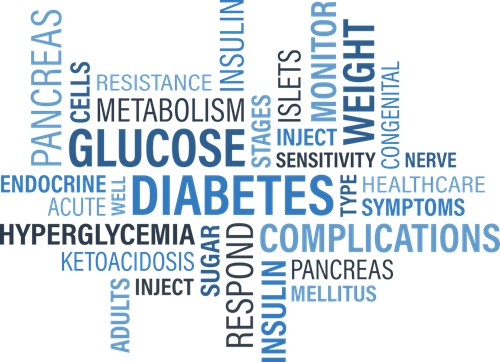
We are all too familiar with the word diabetes these days, and individuals in the trucking field can be even more at risk due to poor food choices and a lack of exercise out on the road. It is our mission to help educate drivers on what diabetes is and how they can help stave off this ever-growing disease. As we dig into what diabetes is we also want to look at ways to prevent or at least delay the onset of it while driving out on the road.
Type 1 vs. Type 2 Diabetes
That right! There are two types of diabetes. Type 1 is also known as juvenile diabetes. Only 5% of people with diabetes have this form of the disease. People with Type 1 diabetes are insulin dependent and have to be on supplemental insulin therapy. Insulin is a hormone that helps glucose get into your cells to give them energy. This type of diabetes typically strikes children and young adults thus why it is referred to as juvenile onsite diabetes.
Also Read: Tips for Managing Diabetes on the Road
Type 2 diabetes is the more prevalent or common form of diabetes. It strikes more than three million people per year. Type 2 diabetes occurs when blood sugar levels are too high and your body does not make or use insulin properly. Your pancreas starts working overtime to try and make enough insulin to keep the glucose levels in your blood at the normal level but it just can’t. Unfortunately, factors like obesity and a lack of exercise make that more difficult. There are also factors like a family history of diabetes or being older that increase your risk as well. Type 2 diabetes is determined based on a blood glucose test.
It is very important to know the warning signs, which can appear slowly:
- Being very thirsty
- Urinating often or unusual odor to urine
- Feeling very hungry or tired
- Losing/Gaining weight without trying
- Having sores that heal slowly
- Having blurry eyesight
- Darkening skin under armpits, neck, and thighs
- Difficulty with sexual function
- Numbness, tingling, or burning sensations in the feet
Type 2 is caused by a combination of genetics and unhealthy lifestyle habits. Genetics you can’t control but lifestyle habits you definitely can.
- Diet and exercise are key in keeping your weight and glucose levels normal so you don’t develop this disease that will last the rest of your lifetime. If left untreated it can damage your heart, kidneys, and other organs in your body.
- Managing your weight is key. If you are overweight, you have a higher risk of getting Type 2. Extra body fat, especially around the abdomen causes higher risk. Regular exercise is helpful to burn off extra calories and keep your sugars under control. A moderate amount of exercise each day will also reduce your cholesterol and improve blood pressure.
- Eating a balanced and healthy diet will allow your body to properly process foods and break them down so they don’t turn straight to sugar. Eating vegetables and fruits allows your body to get the nutrients it needs and allows you to get full on healthy food. High Fiber foods that are low in salt are best for you. Eating high carb, high fat, and high sugar foods increase your chances of getting Type 2. Processed foods should be limited. Preparing foods yourself allows you to know what is in the food and regulate the salt.
- Another way to prevent Type 2 is to stop smoking and limit the amount of alcohol that is consumed. Too much alcohol can increase your triglycerides, and cause weight gain. Smokers are twice as likely to get Type 2 diabetes.
Reducing the risk of Type 2 Diabetes is not that hard if armed with the proper information. You should schedule an appointment with your doctor to see if you are currently at risk for Type 2 Diabetes. This will help with early warning signs and prevention. A balanced diet and moderate exercise is the best way to keep your blood sugar normal and prevent Type 2.
As a professional driver, there are guidelines and certain rules, which you must abide by to stay rolling down the road. If you have type 2 but do not use insulin you do not need to apply for diabetes exemption. It is however very important for you to take control of your health. You can start by knowing and checking your blood glucose and A1C levels. Testing your blood sugars daily will help better manage your diabetes. Getting an A1C test gives you an average of your blood sugar level over the past 2-3 months. A good goal for A1C is below 7.
Diabetes is a very real disease and you can take steps to limit your risk. It is important to take care of your body and to get checked by your doctor, especially as you get older. You should always listen to your body and make adjustments when you feel it is necessary. Even if you have Type 2 already, you can limit the effects on your body and live a healthy life through diet and exercise. Staying healthy is important and will help you live and drive longer.